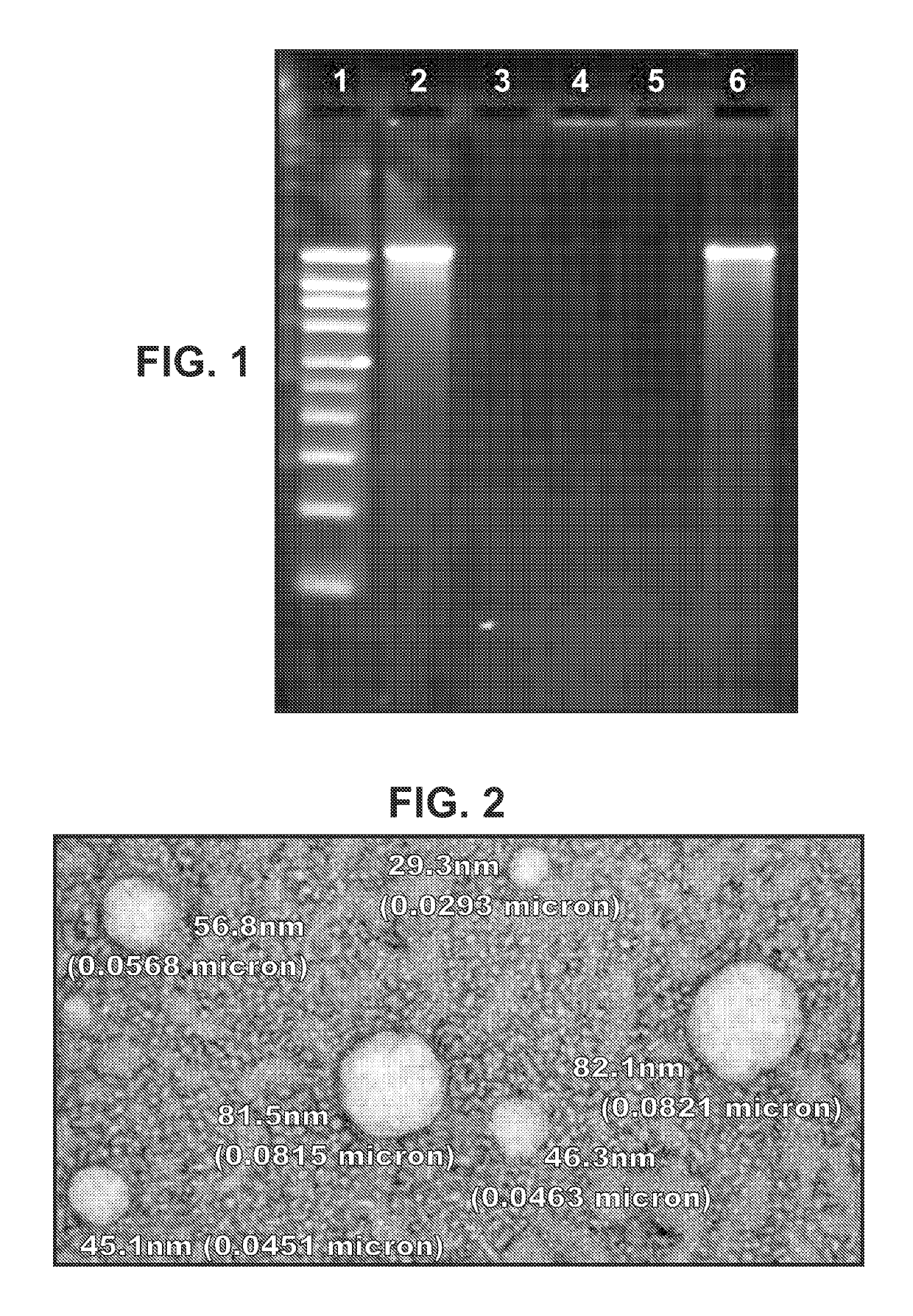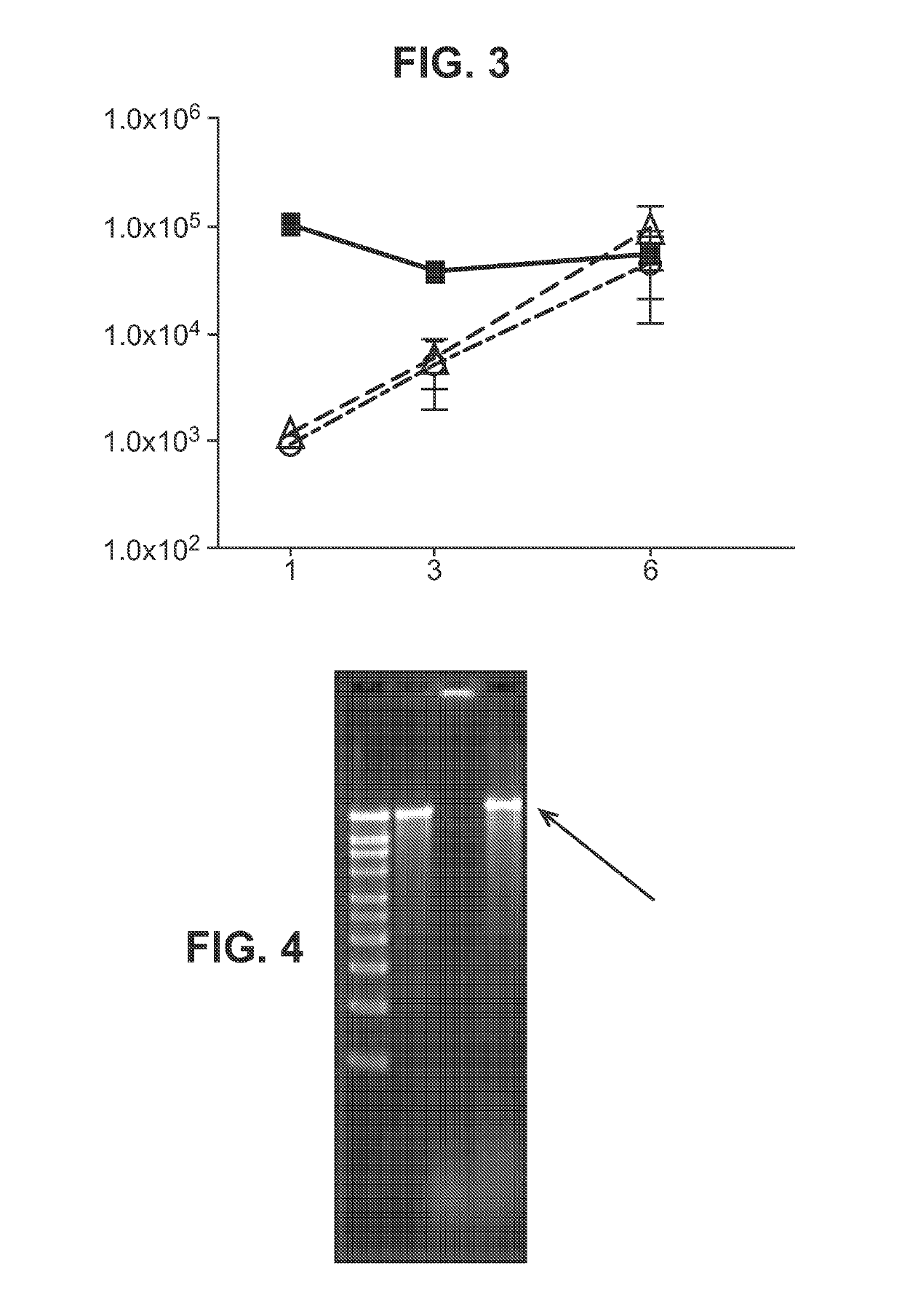Immunisation of large mammals with low doses of RNA
a technology of rna and large mammals, which is applied in the direction of antibody medical ingredients, immunological disorders, peptide/protein ingredients, etc., can solve the problems of reduced potency and high cost of clinical-grade dna production, and achieve the effect of convenient preparation
- Summary
- Abstract
- Description
- Claims
- Application Information
AI Technical Summary
Benefits of technology
Problems solved by technology
Method used
Image
Examples
Embodiment Construction
[0182]In some embodiments of the invention, the RNA includes no modified nucleotides (see above). In other embodiments the RNA can optionally include at least one modified nucleotide, provided that one or more of the following features (already disclosed above) is also required:[0183]A. Where the RNA is delivered with a liposome, the liposome comprises DSDMA, DODMA, DLinDMA and / or DLenDMA.[0184]B. Where the RNA is encapsulated in a liposome, the hydrophilic portion of a lipid in the liposome is PEGylated.[0185]C. Where the RNA is encapsulated in a liposome, at least 80% by number of the liposomes have diameters in the range of 20-220 nm.[0186]D. Where the RNA is delivered with a microparticle, the microparticle is a non-toxic and biodegradable polymer microparticle.[0187]E. Where the RNA is delivered with a microparticle, the microparticles have a diameter in the range of 0.02 μm to 8 μm.[0188]F. Where the RNA is delivered with a microparticle, at least 80% by number of the micropar...
PUM
 Login to View More
Login to View More Abstract
Description
Claims
Application Information
 Login to View More
Login to View More - R&D
- Intellectual Property
- Life Sciences
- Materials
- Tech Scout
- Unparalleled Data Quality
- Higher Quality Content
- 60% Fewer Hallucinations
Browse by: Latest US Patents, China's latest patents, Technical Efficacy Thesaurus, Application Domain, Technology Topic, Popular Technical Reports.
© 2025 PatSnap. All rights reserved.Legal|Privacy policy|Modern Slavery Act Transparency Statement|Sitemap|About US| Contact US: help@patsnap.com



